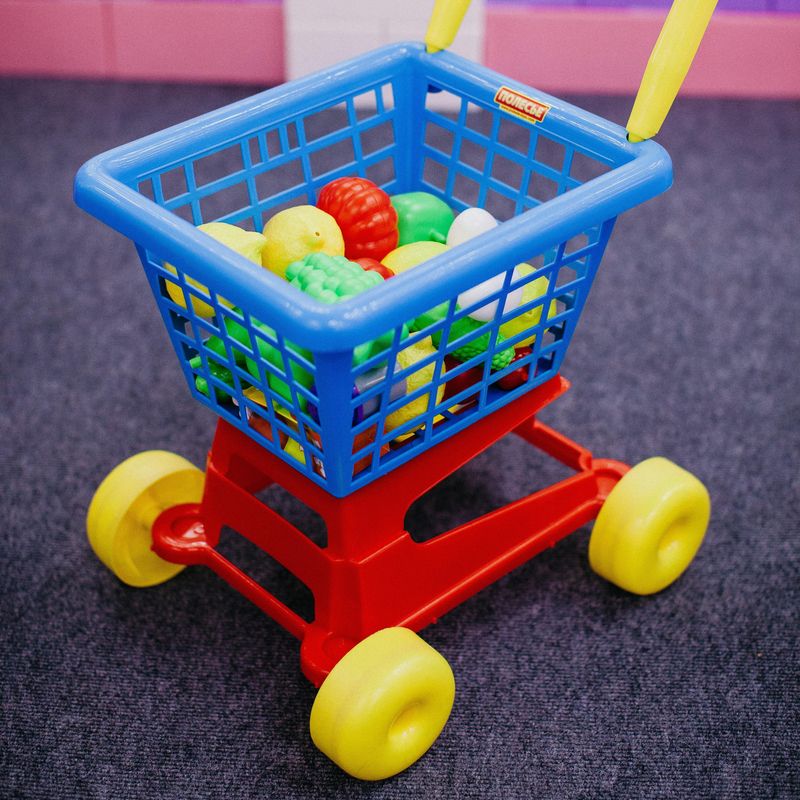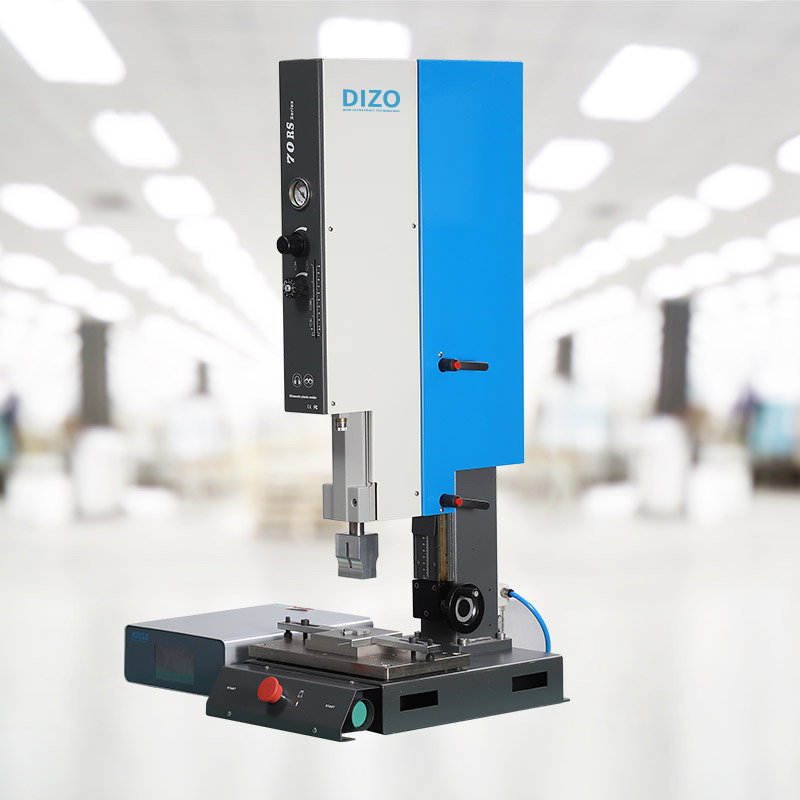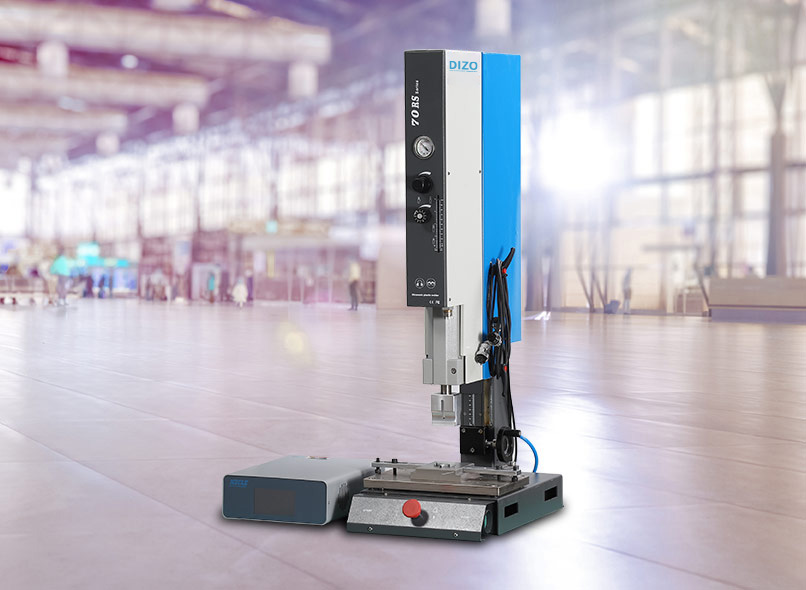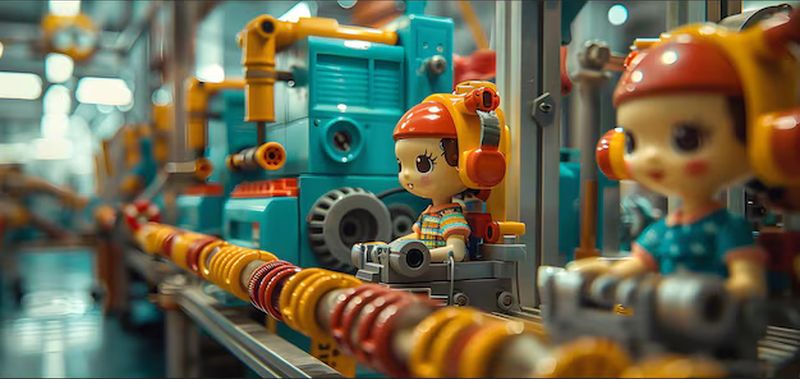Ultrasonic Welding in Toys Manufacturing: Safe & Precise

Ultrasonic plastic welding is an important technology in toy manufacturing. It uses high-frequency sound waves to join plastic parts quickly and precisely. This method is very useful in the toy industry, where safety, durability, and quality are critical.
By using the right ultrasonic plastic welding machine, toy manufacturers can bond plastic components without using heat, chemicals, or adhesives. This makes ultrasonic plastic welding ideal for creating safe, reliable, and high-quality toys.
In this article, we will look at how ultrasonic plastic welding is used in the toy industry, its benefits, and how it helps improve toy manufacturing.

Table of Contents
Applications of Ultrasonic Welding in the Toy Industry
Advantages of Ultrasonic Plastic Welding in Toy Manufacturing
Optimization of Ultrasonic Welding Parameters for Toy Components
Material Compatibility and Joint Quality in Toy Manufacturing
Environmental Impact of Ultrasonic Plastic Welding in Toy Manufacturing
Safety and Durability of Ultrasonically Welded Joints in Children's Toys
Choose Dizo Ultrasonic Welding Machine for Toy Components Assembly
FAQs
Conclusion
Applications of Ultrasonic Welding in the Toy Industry
Ultrasonic plastic welding has revolutionized the manufacturing of toys, offering precise, fast, and cost-effective solutions for joining plastic components. Next, let's explore the various applications of ultrasonic welding in the toy industry.
1. Assembly of Toy Components
Ultrasonic plastic welding is widely used for assembling small and complex toy parts, such as bodies, arms, wheels, and internal components. The ultrasonic welder uses high-frequency sound waves to create heat at the joint, causing the plastic to melt and bond together.
This process is fast and doesn't require additional fasteners or adhesives. It ensures strong, reliable connections that hold up over time. The ultrasonic plastic welding machine helps manufacturers reduce production costs and time.

2. Enclosure Sealing
Many toys, especially those with electronic components, require sealed enclosures to protect internal parts from dust, moisture, or damage. Ultrasonic plastic welding provides an effective solution for sealing these enclosures, creating tight, reliable seals that ensure the safety and longevity of the toy.
This process is commonly used in toys with built-in lights, sound, or movement, as it helps keep sensitive electronics safe while maintaining the aesthetic appearance of the toy.
3. Battery Compartment Sealing
Battery compartments in toys must be securely sealed to prevent battery leakage or corrosion and to ensure the safe operation of the toy.
Ultrasonic plastic welding is used to seal battery compartment covers, providing a strong bond between the plastic parts. By using an ultrasonic welder, manufacturers ensure that the battery compartment stays sealed throughout the toy's lifespan.
4. Toy Packaging
Ultrasonic welding is also used in the toy packaging process, particularly for blister packs and plastic cases. Ultrasonic plastic welding machines can create strong, tamper-proof seals that protect toys during shipping and storage.
The speed and strength of the process make it an efficient choice for packaging large volumes of toys quickly.
5. Soft Toy Manufacturing
In soft toys, ultrasonic welding is used to attach small plastic components, such as eyes, noses, and buttons, without using traditional stitching or glue.
This method is ideal for creating secure, permanent bonds between the fabric and plastic, ensuring that these components stay in place while also being safe for children. The process is clean and precise, providing high-quality results that meet strict safety standards.
6. Attachment of Toy Fasteners
Fasteners, such as clips, snaps, and buttons, are often added to toys using ultrasonic welding. This technique creates a strong, reliable attachment without the need for screws or glue. By using plastic welding equipment, toy manufacturers can ensure that these fasteners stay in place, increasing the toy's durability.
7. Toys Repair and Maintenance
Ultrasonic welding is also useful for repairing damaged toys. Broken plastic components can be effectively welded together, restoring the toy to its original condition without compromising its strength or appearance.
Ultrasonic plastic welder is a reliable, long-lasting solution for toy repair, which is particularly useful for high-quality or collectible toys that may need maintenance over time.
Advantages of Ultrasonic Plastic Welding in Toy Manufacturing
There are several reasons why ultrasonic plastic welding is preferred for toy manufacturing. Below, we'll explore the key advantages that make ultrasonic welding the go-to method for many plastic toy manufacturers.
1. Low Energy and High Efficiency
Ultrasonic welding consumes less energy compared to traditional welding methods. The process is highly efficient and quick, reducing both energy consumption and production time. This efficiency helps to lower production costs.
2. Very Short Process Times
One of the biggest advantages of ultrasonic welding is speed. The process is completed in a fraction of a second, which allows manufacturers to produce large volumes of toys in a short time.
3. No Damage to the Component
Unlike traditional welding methods that may require excessive heat or force, ultrasonic plastic welding does not damage the plastic components. The process uses sound waves instead of heat, ensuring that the toy parts remain intact and maintain their structural integrity. This helps ensure that toys are safe and high-quality.
4. No Solvents and Additives
An important advantage of ultrasonic plastic welding is that it does not require solvents, adhesives, or other additives. This makes the process more environmentally friendly and safer for workers. Moreover, it reduces production costs by eliminating the need for additional materials.
5. Constant, Reproducible Welding Results
With ultrasonic plastic welding machines, toy manufacturers can achieve consistent and reproducible results. The precision of the ultrasonic welder ensures that every weld is of the same high quality, helping manufacturers maintain strict quality control standards across their entire product range.
6. Works with Different Thermoplastic Materials
Another advantage of ultrasonic welding is its versatility. It works with a variety of thermoplastic materials, such as ABS, polycarbonate, PVC, and more. This makes it suitable for different types of plastic commonly used in toys, allowing manufacturers to work with a wide range of materials.
7. Tools Can Be Changed Quickly
The tools in ultrasonic plastic welding machines can be changed quickly, allowing manufacturers to switch between different toy parts or materials without much downtime. This flexibility helps improve overall production efficiency and reduces delays.
8. No Risk of Injury from Hot Machine Parts
Since ultrasonic welding does not rely on heat, there is no risk of injury from hot machine parts. This makes it a safer option compared to traditional welding methods, which often involve high temperatures.

Optimization of Ultrasonic Welding Parameters for Toy Components
The success of ultrasonic plastic welding in toy manufacturing relies on carefully optimized welding parameters. These include amplitude, pressure, welding time, and energy. Each parameter affects the welding process and the result.
Amplitude
Amplitude refers to the vibration intensity produced by the ultrasonic welding machine. It affects the depth of the weld, and the heat generated at the interface. Higher amplitude typically results in deeper welds, but it must be carefully controlled to prevent damage to the plastic components.
Too high amplitude can cause excessive melting, leading to deformed or weak joints, while too low amplitude may result in incomplete bonding.
Pressure
The pressure applied during the welding process plays a crucial role in achieving strong and uniform welds. Insufficient pressure may result in weak joints that are prone to failure, while excessive pressure can cause the plastic to deform, affecting the toy's structural integrity.
Optimizing the pressure ensures that the plastic components are securely bonded without causing any damage.
Welding Time
Welding time refers to the duration for which the ultrasonic vibrations are applied. Too short a welding time may result in weak or incomplete welds, while too long a welding time can overheat the plastic, leading to potential deformation.
Properly controlling the welding time ensures that each component is welded precisely, with the right amount of heat applied.
Energy
Energy is the total amount of power delivered during the welding process. The amount of energy used must be optimized to ensure that the plastic components are properly fused without causing thermal degradation or weakening the bond. The correct energy level depends on factors like material type, thickness, and component design.
By carefully adjusting these parameters, manufacturers can achieve the perfect balance between strong, durable welds and high-quality toy components.
Material Compatibility and Joint Quality in Toy Manufacturing
Material compatibility also influences ultrasonic welding. Different thermoplastic materials, such as ABS, polycarbonate, and polyethylene, have unique properties that affect how they respond to ultrasonic welding.

Melting Point
Materials with higher melting points require more energy to weld. It's important to ensure that the ultrasonic energy does not overheat the material, which could lead to weak joints or damaged parts.
Viscosity
The viscosity of a material affects how easily it can be welded. Low-viscosity materials tend to flow more easily, while high-viscosity materials may require more energy or longer welding times to form a strong bond.
Acoustic Impedance
Acoustic impedance refers to how well a material can transmit ultrasonic energy. Materials with similar acoustic impedance are easier to weld together because the ultrasonic vibrations can be effectively transmitted from one part to another.
When welding different materials, manufacturers must consider the acoustic properties of each to ensure effective energy transfer and high-quality joint formation.
By selecting compatible materials and optimizing welding parameters, manufacturers can ensure strong, reliable joints that meet safety standards and ensure the durability of the toy.
Environmental Impact of Ultrasonic Plastic Welding in Toy Manufacturing
Ultrasonic plastic welding is a more environmentally friendly option for toy manufacturers. It doesn't require the use of harmful chemicals or solvents, which means no harmful fumes or waste is produced during the welding process.

By using ultrasonic plastic welding machines, toy manufacturers can reduce harmful waste and emissions associated with other welding techniques.
Another major advantage is energy efficiency. Ultrasonic plastic welding requires minimal energy compared to traditional plastic welding equipment that often relies on high heat and long processing times.
As a result, manufacturers can save energy costs and reduce their overall carbon footprint. Additionally, the precision of the ultrasonic welder means less plastic waste, ensuring that manufacturers use only the necessary amount of material to produce high-quality toys.
Ultrasonic welding also reduces material waste. The precise nature of the process ensures that less plastic is wasted during production, making the process more sustainable. Toys manufactured using ultrasonic welding often have stronger joints, reducing the need for reworking or fixing defects.
Lastly, ultrasonic welding can be used to join different types of plastic materials. This versatility can help manufacturers reduce the number of components required, thus lowering plastic consumption and further contributing to sustainability efforts in the toy industry.
Safety and Durability of Ultrasonically Welded Joints in Children's Toys
Ultrasonic plastic welding is especially beneficial in ensuring the safety and durability of children's toys. Traditional welding methods often involve high temperatures that can damage delicate components or pose safety risks.

In contrast, ultrasonic plastic welders use high-frequency sound waves, which do not rely on heat. This makes the process safer for operators and reduces the risk of burns or accidents.
The durability of ultrasonically welded joints is also a key benefit. Toys often face rough handling and need to be able to withstand wear and tear. Ultrasonic welding creates strong, reliable joints that are often stronger than the plastic itself. This ensures that the parts stay securely attached, even after frequent use.
Ultrasonic plastic welding also ensures that joints remain intact even when exposed to water or sunlight, making the toys durable and long-lasting. For example, toys that are meant for outdoor play or are water-resistant, such as bath toys or water guns, benefit greatly from the strong, waterproof joints produced by ultrasonic welding.
Moreover, this process does not damage the delicate or intricate parts of a toy. Ultrasonic welding is gentle and precise, which is ideal for toys that have small or complex components, ensuring they are not damaged during assembly.
Choose Dizo Ultrasonic Welding Machine for Toy Components Assembly
Dizo ultrasonic welding machines are an excellent choice for toy manufacturers looking to improve the efficiency and quality of their production process. These ultrasonic plastic welding machines provide precision, safety, and efficiency, making them perfect for assembling toy parts. Here's why:
Precision: Dizo ultrasonic plastic welders ensure high-quality, consistent welds every time. This precision is essential in the toy industry, where small mistakes can lead to defective products.
Energy Efficiency: Dizo plastic welding equipment is designed to consume minimal energy, which helps reduce costs and the environmental impact of the production process.
Safety: Dizo ultrasonic welding machines are built with safety in mind. Since they don't use high temperatures, there is a low risk of burns or other accidents. They also feature a safety grating protective shield which can ensure greater safety.
Versatility: Dizo ultrasonic welding machines are highly adaptable. They can weld a wide range of plastic materials, making them suitable for a variety of toys. Whether it's soft toys, action figures, or electronic toys, Dizo ultrasonic welding machines can handle different types of components.
Durability: Dizo ultrasonic welding machines are built to last. Their robust construction ensures long-term reliability, meaning fewer breakdowns and maintenance issues over time. This makes them a smart investment for toy manufacturers.
FAQs
Is ultrasonic welding safe?
Yes, ultrasonic welding is a safe process. Ultrasonic welding generates heat only at the joining point, reducing the risk of burns or other injuries. It does not use harmful chemicals or adhesives, which makes it safer for both operators and consumers.
What materials can be ultrasonically welded?
Ultrasonic welding can be used with a wide range of thermoplastic materials commonly found in the toy industry. These include ABS, PVC, polycarbonate, polypropylene, and others. The technology works by joining plastics that are easily melted and fused by sound waves.
Is ultrasonic welding waterproof?
Yes, ultrasonic welding creates strong, sealed bonds that can be waterproof. This makes it ideal for toys that require a watertight seal, such as toys with electronic parts, bath toys, or toys meant to be used outdoors.
Ultrasonic plastic welding machines ensure that these seals are tight and durable.
What types of toys benefit most from ultrasonic welding?
Toys with multiple small plastic parts, such as action figures, dolls, and vehicles, benefit the most from ultrasonic welding.
Ultrasonic welding is perfect for joining parts without using screws, adhesives, or fasteners. Additionally, toys with electronic components or battery compartments also benefit from the good sealing capabilities of ultrasonic plastic welding.
How does ultrasonic welding improve the durability of toys?
Ultrasonic welding improves the durability of toys by creating reliable joints between plastic parts. Unlike other methods, it avoids using adhesives that may degrade over time.
The heat generated at the joining point is controlled precisely, which ensures that the bond is not only strong but also long-lasting. As a result, toys assembled using ultrasonic welding are less likely to break or fall apart, even with heavy use.
Conclusion
Ultrasonic plastic welding is a cutting-edge technology that offers many benefits to the toy industry. It is an energy-efficient, safe, and environmentally friendly way to join plastic components.
With applications ranging from toy assembly to battery compartment sealing, ultrasonic plastic welding helps create durable, high-quality toys. Ultrasonic plastic welding ensures that the joints are strong and waterproof, making the toys safer for children.
Choosing the right plastic welding equipment from an experienced ultrasonic welding manufacturer such as Dizo can help manufacturers streamline production, reduce waste, and ensure product quality.






